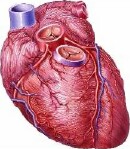
TUESDAY, Feb. 28 (HealthDay News) — Researchers who used family trees dating back to 1811 to estimate the death risk for people with inherited heart rhythm disorders say their findings can help doctors determine when to screen and treat today’s patients with these disorders.
Sudden cardiac death can occur in apparently healthy people due to heart rhythm disorders. Genetic testing can identify people with an inherited heart rhythm disorder (arrhythmia), but that raises questions about how and when to treat children who may not yet be experiencing symptoms, which can take years to develop.
In the study, researchers used Dutch archives to reconstruct the family trees for patients with inherited heart conditions, including long QT syndrome, SCN5a-overlap syndrome, CPVT and Brugada syndrome. The arrhythmia-associated gene mutations examined in the study are rare. However, the children of people who carry one of these mutations have a 50 percent chance of inheriting it.
The investigators were able to identify age ranges that were associated with an increased risk of death among people who had the mutations but had not yet been diagnosed or treated for the condition.
Among the findings:
- The death risk for people with long QT syndrome — a condition related to sudden infant death syndrome — was high between 1 and 19 years old, but was particularly high in the first 10 years of life for those with a specific mutation (LQTS1). The risk of death for people with two other mutations (LQTS2 and LQTS3) didn’t significantly increase until they were teens or adults.
- For people with SCN5a-overlap syndrome, death risk started to rise at age 5 and became significant between ages 10 to 59, with a peak between ages 20 to 39. People with this condition have a gene mutation that affects the way heart cells respond to the heart’s internal electrical current.
- Catecholaminergic polymorphic ventricular tachycardia (CPVT) is a condition that causes fainting, often during exercise or strong emotions. Death risk for people with this condition was highest between ages 20 to 39.
- Brugada syndrome causes fainting and a rapid heart rhythm that can lead to sudden cardiac death. The risk of death for people with this condition was highest between ages 40 to 59. Males were at greatest risk.
The study appears in the current issue of the journal Circulation: Cardiovascular Genetics.
“We have to be careful not to draw conclusions for families with arrhythmias caused by different mutations,” lead researcher Dr. Eline Nannenberg, a clinical geneticist at the Academic Medical Center in Amsterdam, said in a journal news release.
“However, this new data can guide screening. In LQTS1, we advise starting genetic and heart screening of first-degree family members (children, siblings, parents) at a very young age,” Nannenberg added.
Female patients who have Brugada syndrome but no symptoms may not need invasive treatment for the first 30 years of life, but should follow standard prevention measures, such as fighting fever, according to the researchers.
In people with SCN5a-overlap syndrome, it may be possible to delay implantation of a pacemaker or implantable cardioverter-defibrillator (ICD) until after age 5, they noted.
More information
The Heart Rhythm Society has more about heart rhythm disorders.

